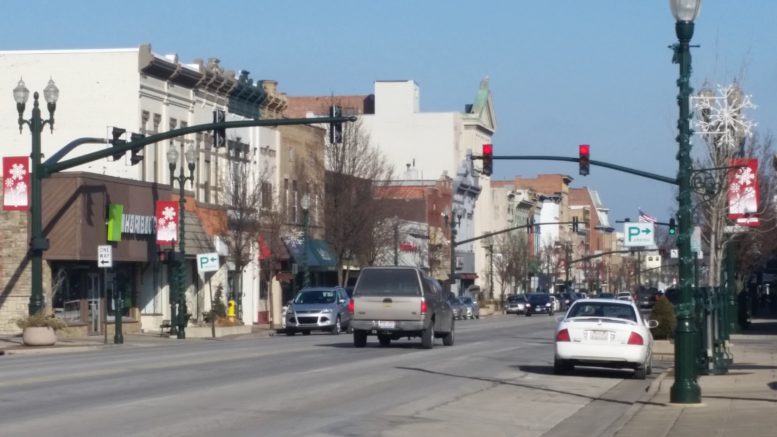By JAN LARSON McLAUGHLIN
BG Independent News
So, just how age friendly is Bowling Green?
To find out, a group of senior citizen sleuths was armed with cameras and sent out to document how accommodating the community is to its oldest residents.
The study used World Health Organization criteria for age-friendly cities, and paired up local senior citizens with a Bowling Green State University graduate class in gerontology led by Dr. Wendy Watson.
The project began by finding willing participants at the Wood County Committee on Aging, then setting them loose in the community with cameras to photograph ways in which the city poses challenges and helps senior citizens.
“These are people who don’t often have a voice,” Watson said.
The photos showed a city with some roadblocks and some assists for seniors.
“It’s not perfect, but it’s getting better,” Watson said the results revealed. “There were many more positives than the students expected.”
The challenges included areas not made accessible to some seniors, such as not having handicapped doors, no hand railings and missing sidewalks that make it very difficult to navigate especially for someone using a motorized scooter.
The study also found that while Bowling Green has many services that are helpful to seniors, they are not accessible to all.
“We certainly have some great services, but not everybody can afford those things,” Watson said, noting the cost of transportation services. “Those aren’t available to everybody if you don’t have the money.”
“Transportation comes up over and over and over,” as a barrier to seniors, she said.
The study also identified support systems in the community, such as the Wood County Committee on Aging, churches, medical services and volunteer opportunities for senior citizens.
And the seniors participating in the study noted positive attitudes in the community about aging residents.
“There’s a friendliness of the community,” and a growing sensitivity to the needs of seniors, Watson said. “They had seen positive changes over time.” For example, the larger lighted street signs installed by the city were appreciated by the seniors.
The study pointed out issues even to those who work with seniors on a daily basis, said Angie Bradford, of the Wood County Committee on Aging.
“This project encouraged me to become more observant to my surrounding when dealing with the older population,” Bradford said. “I have always been an advocate for the older adults, but I can now see some of the obstacles they face first hand.”
Those obstacles include transportation, senior housing located in “remote” locations with no grocery stores nearby, unsafe or missing sidewalks, and limited incomes that create barriers, Bradford said.
Watson said a secondary goal of the study was to get the graduate students involved beyond campus and senior living facilities, and working closely with the older generation. “We wanted to get them out in the community,” she said.
Bradford said the project benefited both ends of the age spectrum involved. “Some students hadn’t had hands on experience with independent older adults,” she said.
“The older adults did enjoy participating in the study,” Bradford said. “You could tell with their creativity in the photographs that were taken and their comments during the focus group that this subject hit close to home.”
The students talked with the seniors about their experiences, then analyzed the information collected. They wrote up a report on the findings.
But the senior sleuths did not want their study to languish on a shelf.
“They wanted us to make sure people heard,” Watson said.
“They didn’t want us to just leave the results in PowerPoint form,” Bradford said. “They want it compiled and sent on to ‘higher aboves,’ such as city council, planning boards, the senior center, the media, etc.”
So the information gathered will be presented at the next Wood County Committee on Aging board meeting on Aug. 10, at 1:15 p.m., at the senior center in Bowling Green.

